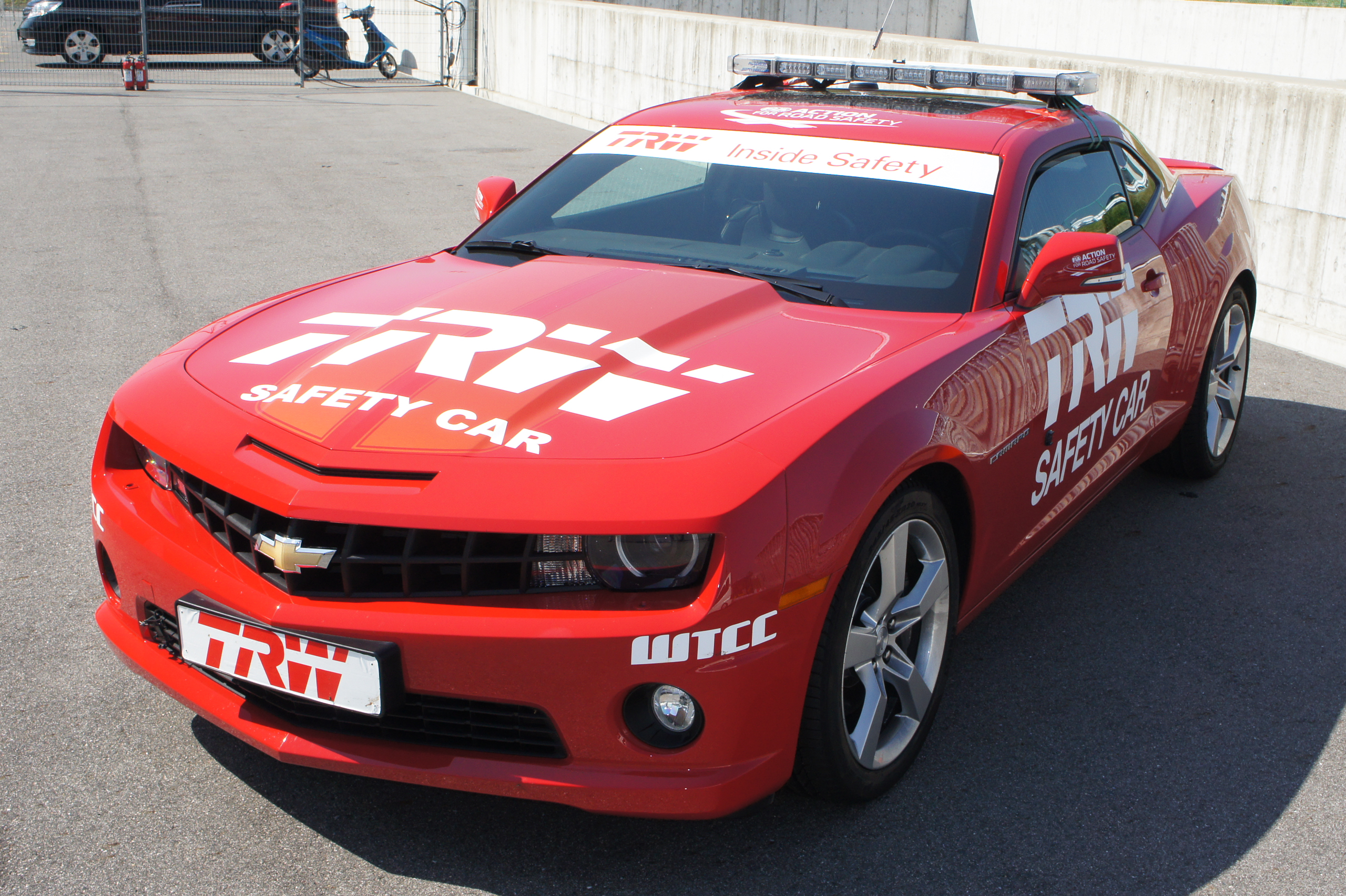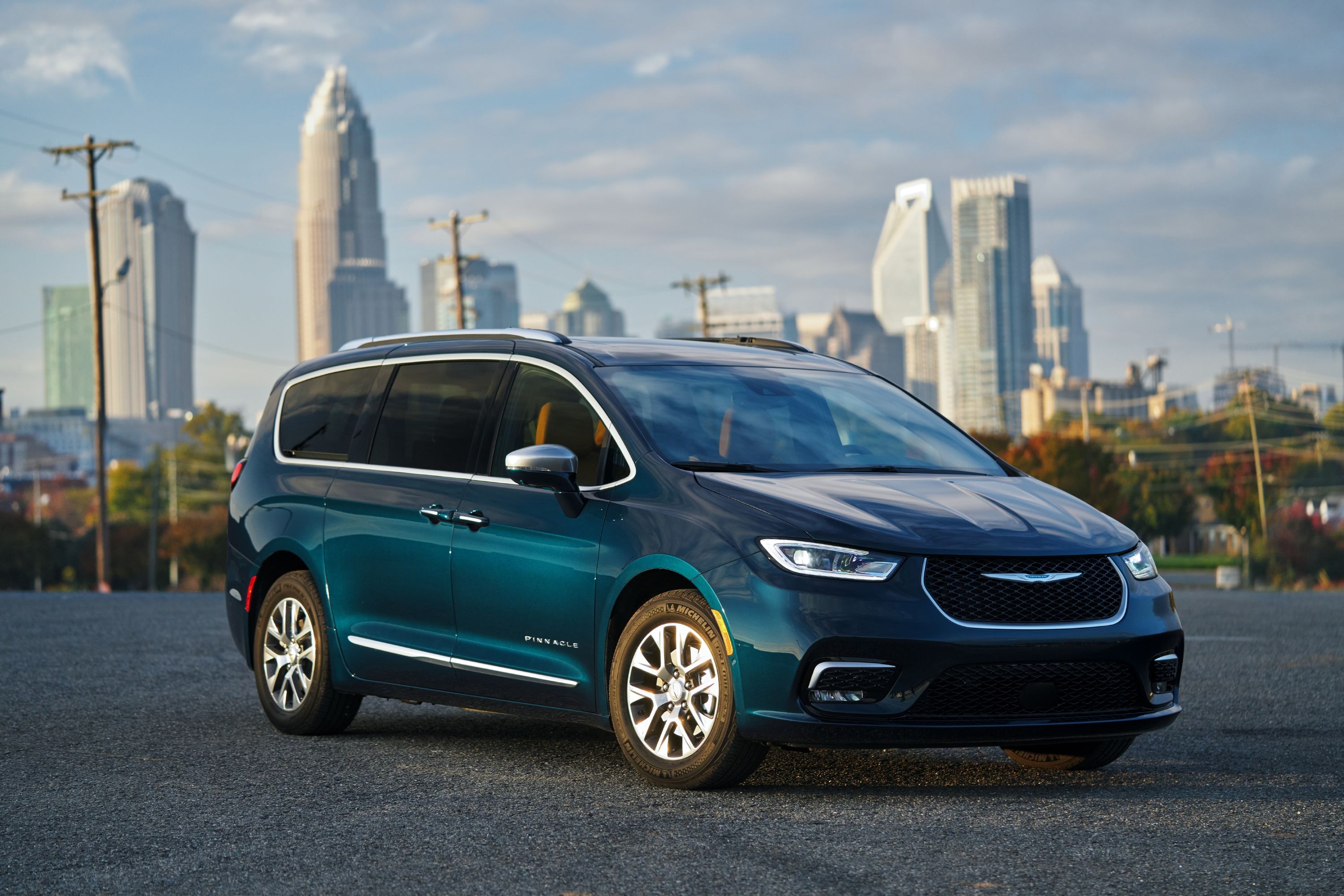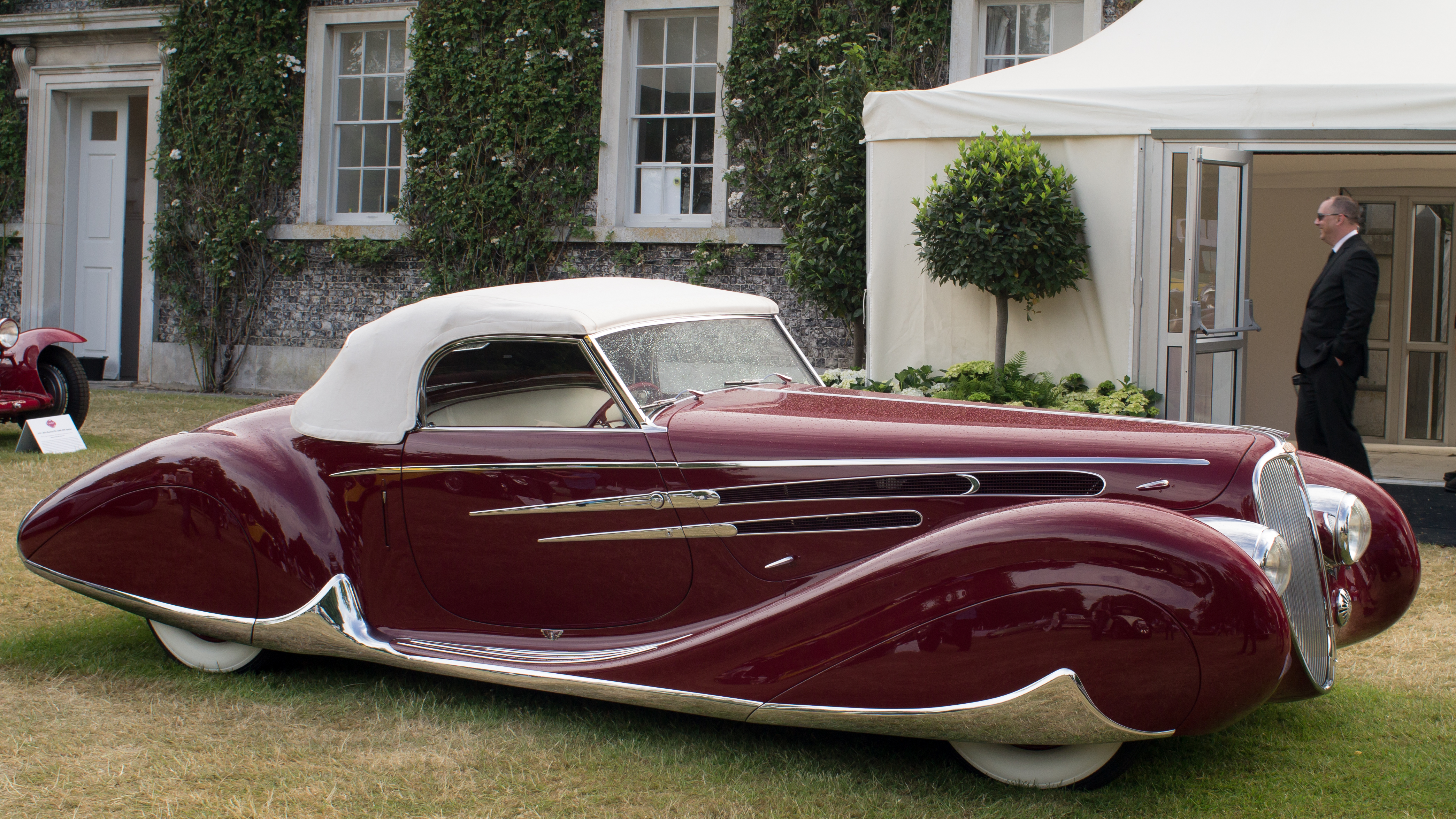
The automotive world has always been a dynamic arena, a stage where brands rise to prominence with groundbreaking innovations, capture the public’s imagination with iconic designs, and, just as often, fade into the annals of history. While names like Ford, Toyota, and Mercedes-Benz have cemented their places as enduring giants, the industry’s landscape is littered with hundreds of once-revered manufacturers that, for various reasons—economic downturns, corporate mergers, or simply changing tastes—disappeared, leaving behind a legacy of engineering marvels and unfulfilled potential. Yet, within this vast graveyard of defunct marques, there lies a treasure trove of distinctive identities, engineering philosophies, and design visions that continue to resonate with enthusiasts and, crucially, possess surprising relevance for today’s rapidly transforming automotive market.
We are currently witnessing one of the most significant transformations in automotive history, driven by seismic shifts toward electrification, autonomous driving, and new mobility services. This period of unprecedented change isn’t just about new technology; it’s about redefining what a car is, how it’s built, and how it fits into our lives. In this exciting, often unpredictable environment, the time is ripe for the resurrection of certain heritage brands. These forgotten automakers aren’t merely relics of the past; they represent a foundation of unique perspectives and nostalgic appeal that could fill overlooked market niches and offer fresh alternatives to the increasingly homogeneous offerings of established manufacturers.
From American independents that championed efficiency and innovation to European specialists renowned for their distinctive character, these brands possess compelling stories and unrealized potential. Their historical emphasis on quality, groundbreaking design, and performance, often coupled with an independent spirit, makes them prime candidates for a powerful resurgence in the modern era. Join us as we explore four of these remarkable marques, delving into their past glories and envisioning a future where their names once again command attention on the world’s roads.

1. **Packard (1899-1958)**Few automotive disappearances have left such a profound sense of loss as Packard, a name once synonymous with American luxury and engineering excellence. Founded in Warren, Ohio, by brothers James and William Packard, the company built its sterling reputation on the simple yet powerful slogan, “Ask the Man Who Owns One,” a testament to their confidence that owner satisfaction spoke more volumes than any advertising campaign. Packard wasn’t just building cars; they were crafting experiences, setting a global standard for automotive refinement that rivaled the best from Europe.
Packard’s golden era was truly the pre-war decades, a period when its meticulously handcrafted automobiles stood shoulder-to-shoulder with esteemed marques like Rolls-Royce and Mercedes-Benz, achieving comparable prestige and desirability. The company was a pioneer, introducing innovations that we now take for granted, such as the modern steering wheel and the H-pattern gearshift. Perhaps most notably, Packard was responsible for America’s first production V12 engine, the Twin Six, a marvel of engineering that underscored their commitment to cutting-edge performance and smoothness. Their uncompromising dedication to quality was legendary, with each engine painstakingly hand-built and subjected to a rigorous 14-hour testing process before it was ever installed in a chassis.
However, even a legacy as strong as Packard’s could not withstand certain pressures. The brand’s decline tragically began with its 1954 merger with the financially struggling Studebaker, an alliance that, ironically, saw the stronger premium brand unable to salvage the more mainstream manufacturer. The final true Packards rolled off the assembly line in 1956, marking the end of an era. The nameplate lingered on, tragically rebadged onto Studebaker models until 1958, a sad and undignified coda for such a distinguished and historically significant marque. The abruptness of its demise left a void that, for many enthusiasts, has never truly been filled.
Today’s ultra-premium luxury market appears perfectly primed for a Packard resurrection. This segment has experienced dramatic expansion, attracting discerning buyers who actively seek distinctive alternatives to the often ubiquitous German and Japanese luxury brands. A revived Packard could expertly position itself in the exclusive space between established luxury marques and ultra-boutique manufacturers like Bentley, offering a unique blend of handcrafted American luxury infused with contemporary technology. This isn’t just about selling a car; it’s about selling an ethos, a return to a specific kind of American opulence that prioritized substance and quiet confidence.
The brand’s deep heritage of engineering innovation would align flawlessly with the demands of modern electric powertrains. Imagine a Packard electric flagship, its design subtly referencing the visual gravitas of iconic classics such as the 1934 Twelve or the 1941 Clipper, all while seamlessly integrating cutting-edge battery technology. Packard’s historical emphasis on hushed, impeccably smooth operation would translate naturally and profoundly to the inherent quietness and seamless power delivery of electric propulsion. Furthermore, Packard’s tradition of conservative, elegantly evolving styling, which always prioritized timeless beauty over fleeting trends, would offer a refreshing contrast in a luxury market often dictated by aggressive aesthetics and overwrought details. A reborn Packard could once again stand as a beacon of timeless sophistication, proving that true luxury, much like its original slogan implied, often whispers rather than shouts.
Read more about: Lost Legends: 11 Iconic Car Brands That Are Gone Forever
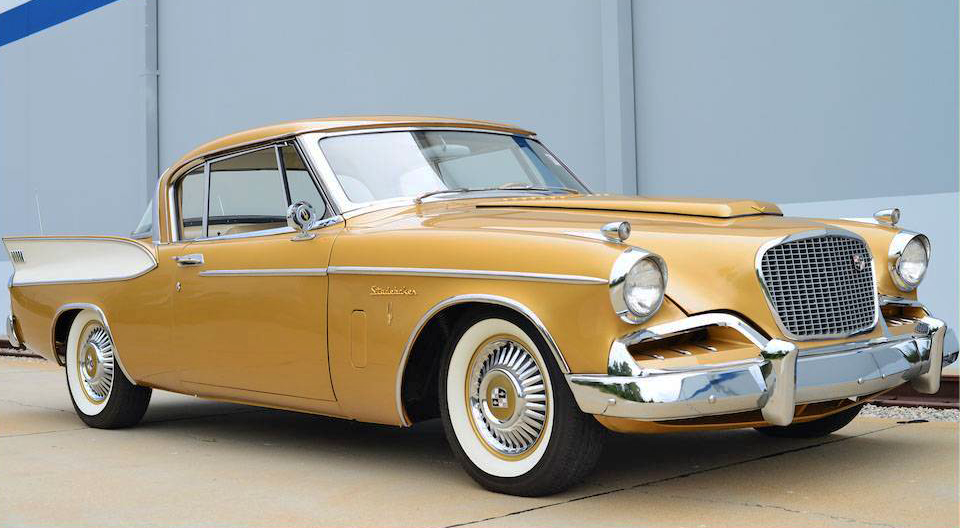
2. **Studebaker (1852-1967)**Long before the vast majority of automobile manufacturers even conceived of their first horseless carriage, Studebaker had already firmly established itself as an American industrial powerhouse. Founded in 1852 as a wagon builder, the company demonstrated remarkable adaptability, successfully navigating the monumental transition from horse-drawn vehicles to automobiles. It carved out a significant niche as one of America’s most innovative independent automakers, leaving an indelible mark on design and engineering before its eventual, and regrettable, demise in 1967. Studebaker’s journey from wagons to automobiles represents a compelling saga of evolution and resilience in a rapidly industrializing nation.
Studebaker’s most enduring and celebrated contributions to automotive design emerged through its highly influential partnership with Raymond Loewy’s design studio. This collaboration resulted in some of the most forward-thinking and aesthetically striking production cars of the mid-20th century, vehicles that challenged the conventional norms of their time. The 1947 Starlight Coupe, with its revolutionary “through” rear window, and the 1953 Starliner hardtop, frequently hailed as one of the most beautiful American cars ever produced, vividly showcased Studebaker’s unwavering commitment to progressive design. This dedication was particularly evident during an era when Detroit’s dominant “Big Three” often favored chrome-laden excess over nuanced innovation.
The company consistently managed to punch above its weight, especially concerning innovation. Studebaker was among the very first American manufacturers to wholeheartedly embrace the compact car concept, notably with its 1939 Champion, years ahead of its larger rivals. Following the cessation of World War II, while other, larger manufacturers were content with merely restyling their pre-war models, Studebaker boldly undertook a complete redesign of its entire lineup, showcasing an appetite for risk and forward momentum. The iconic 1950-1951 bullet-nose Studebakers, polarizing though they might have been, served as a powerful declaration of the company’s willingness to embrace daring and distinctive design risks, pushing the boundaries of automotive aesthetics.
Studebaker’s final significant contribution to the automotive landscape was the Avanti, a fiberglass-bodied personal luxury car that featured a safety-conscious interior, a design element remarkably decades ahead of federal regulations. Despite receiving widespread critical acclaim for its advanced features and distinctive styling, the Avanti regrettably arrived too late to rescue the financially struggling company. Studebaker ultimately ceased U.S. production in 1963, with its final Canadian plant closing its doors permanently in 1967, bringing an end to a remarkable and storied industrial lineage. The Avanti, while a testament to their innovative spirit, couldn’t overcome the deep-seated financial challenges.
The brand’s resurrection in today’s automotive market would make tremendous sense, aligning perfectly with contemporary trends. Studebaker’s historical emphasis on design-forward, reasonably-sized vehicles resonates with a growing consumer desire for more practical yet stylish options. The company’s tradition of offering distinctive styling within mainstream segments could effectively fill a significant void in today’s increasingly homogeneous automotive landscape, where many vehicles often blend into a sea of similar shapes. A revived Studebaker could intelligently capitalize on the burgeoning interest in alternative body styles, perhaps introducing stylish wagon variants at a time when most major manufacturers have largely abandoned this segment, offering a refreshing and functional choice.
Most compellingly, Studebaker’s heritage as America’s longest-lived independent manufacturer would provide it with an authentic and powerful narrative. It could be positioned as a genuine alternative to the corporate automotive behemoths, a brand with undisputed historical credentials for doing things differently, for marching to the beat of its own drum. This independent spirit would undoubtedly appeal to modern consumers who are increasingly seeking products with authentic character, a unique identity, and a compelling story that speaks to innovation and thoughtful design, rather than mass-market appeal.
Read more about: Gone But Not Forgotten: Tracing the Legacy of 14 Iconic American Car Brands That Vanished from Dealerships

3. **Saab (1945-2011)**“Born from jets,” as its iconic advertising proudly proclaimed, Saab brought a distinctive, almost cerebral approach derived from aviation principles to automotive design for over six decades. This Swedish manufacturer cultivated a unique blend of innovation, safety, and quirky charm, garnering a fiercely devoted global following that continues to mourn its absence. Perhaps more than any other recently departed brand, Saab stands out as a prime, and most deserving, candidate for resurrection, embodying a philosophy that resonates deeply with current market demands and enthusiast desires.
Saab’s inherent uniqueness stemmed directly from its origins as an aircraft manufacturer, a company that sought to diversify its operations in the aftermath of World War II. This profound aviation heritage permeated every aspect of its vehicle design, from the remarkably aerodynamic teardrop shape of the original 92 models to the thoughtfully cockpit-inspired driver interfaces found in later, more sophisticated vehicles. The brand established its iconoclastic approach early on, becoming an early adopter and champion of front-wheel drive, widespread turbocharging, and a host of pioneering safety innovations, often long before these features became mainstream industry standards, showcasing their visionary engineering.
The company’s golden era flourished under independent ownership throughout the 1980s, a period when models like the beloved 900 Turbo achieved a remarkable balance. These cars married distinctive, functional design with surprising performance capabilities and practical hatchback versatility, creating a vehicle that was both engaging and immensely usable. These vehicles perfectly embodied Saab’s philosophy of intelligent, functional design, evident in details ranging from the aircraft-inspired night panel instrumentation, which minimized dashboard distractions, to the introduction of heated seats, originally conceived to aid drivers with back problems rather than merely as a luxury amenity. Every feature served a purpose, deeply rooted in user experience.
Regrettably, General Motors’ acquisition of Saab in 1989 initiated a gradual and ultimately damaging dilution of the brand’s cherished uniqueness. While later models, such as the second-generation 9-5, still showed tantalizing flashes of the brand’s original brilliance and innovative spirit, these moments were fleeting. Tragically, this promising vehicle arrived on the market just as GM’s bankruptcy forced the difficult decision to divest itself of the Swedish brand. Following a brief, severely underfunded, and ultimately unsustainable period under Spyker ownership, Saab declared bankruptcy in December 2011, a heartbreaking end to a distinctive automotive chapter that left a gaping hole in the premium segment.
The modern automotive world, with its accelerating pace of technological evolution and shifting consumer values, seems ideally suited for a Saab resurgence. The brand’s historical emphasis on turbocharged, efficient performance aligns perfectly with the current industry trend toward downsized, forced-induction engines, which deliver both power and economy. Saab’s enduring legacy of practical hatchbacks and wagons, which always prioritized versatility and intelligent design, would find a natural resonance with today’s crossover-oriented market, offering a refreshing and functional alternative. Furthermore, its aircraft-inspired design language, characterized by clean lines and functional aesthetics, would provide a distinctive visual identity in an increasingly homogeneous landscape.
Most importantly, Saab’s intellectual approach to luxury—one that consistently emphasized thoughtful engineering, user-centric innovation, and genuine functionality over mere ostentation—would appeal powerfully to contemporary consumers. These buyers increasingly value substance over superficial status symbols. A revived Saab could effectively offer premium vehicles tailored for those who perceive German luxury brands as too commonplace and American alternatives as too flashy, carving out a niche for discerning individuals. With the industry pivoting decisively toward electrification, Saab’s historical clean-slate approach to engineering, its willingness to question established automotive conventions, would be tremendously valuable. It could become an ideal incubator for rethinking vehicle architecture around electric powertrains, potentially creating the same distinctive character with electrons that it once achieved with its pioneering turbochargers and unique designs, truly embodying future-forward thinking with a revered past.
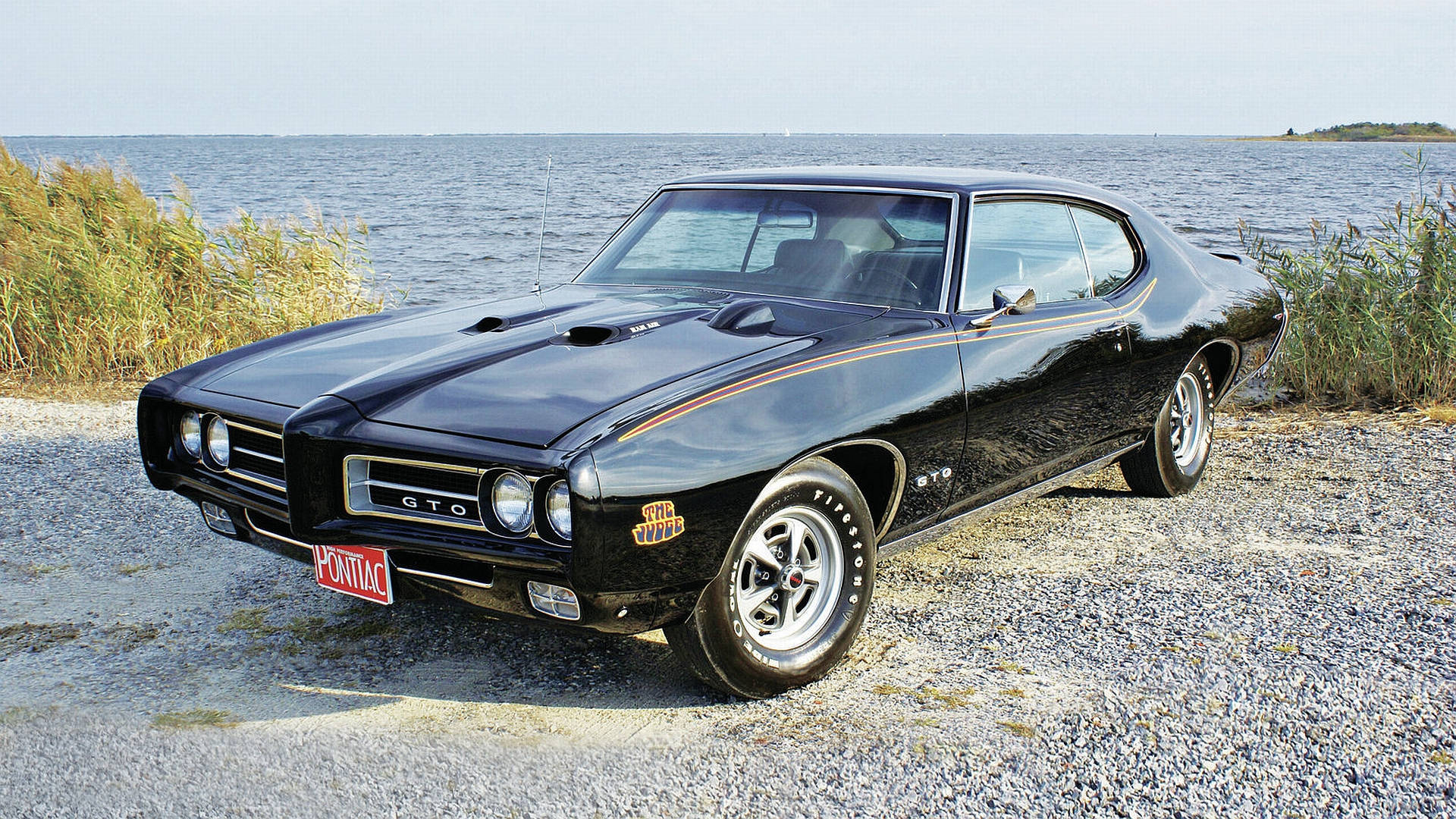
4. **Pontiac (1926-2010)**“We Build Excitement” was far more than a mere marketing slogan for Pontiac; it was a foundational mission statement that, at its absolute best, consistently delivered affordable performance and distinctly bold design to generations of American drivers. Before ultimately becoming a casualty of General Motors’ dramatic 2009 bankruptcy restructuring, Pontiac had firmly established itself as GM’s vibrant “excitement division.” This hard-earned reputation, built on a foundation of accessible power and engaging aesthetics, represents a legacy that is unequivocally worth resurrecting in today’s increasingly homogenized and often conservative automotive world, where distinctive character is at a premium.
Pontiac’s enduring performance identity truly crystallized in the thrilling 1960s, a golden era spearheaded by the visionary leadership of John DeLorean and Bill Collins. These two brilliant minds ingeniously circumvented GM’s internal ban on racing by introducing a stroke of genius: the GTO. This groundbreaking vehicle was essentially a midsize Tempest, but crucially, it was equipped with a large-displacement engine typically reserved for full-size cars. This innovative creation did more than just sell cars; it fundamentally invented the muscle car segment, establishing Pontiac as a brand that not only offered but consistently delivered performance-minded vehicles across a diverse spectrum of price points, making excitement accessible to a broader audience.
Throughout its rich and storied history, Pontiac’s most successful periods were consistently marked by its unwavering commitment to maintaining a distinctive design language and a unique engineering philosophy. The brand’s signature split grille, a design element that became instantly recognizable, combined with dramatic body sculpting and intensely driver-focused interiors, provided a visual excitement that perfectly complemented its ambitious performance aspirations. Pontiac consistently managed to offer a more aggressive styling profile and more engaging driving dynamics than its Chevrolet counterparts, while simultaneously remaining more affordable than the luxurious Buick or Cadillac divisions, striking a perfect balance between accessibility and excitement, carving out its own unique space.
The brand’s final decade, despite the looming financial shadows, included several promising and highly acclaimed vehicles, demonstrating that Pontiac still had significant relevance and innovative capacity. The Australian-imported G8 sedan, essentially a four-door Corvette in spirit and performance, and the stylish Solstice roadster were clear indicators of Pontiac’s continuing ability to produce desirable cars. These vehicles suggested that the brand was still very much a vibrant entity before GM’s overwhelming financial crisis ultimately forced difficult and heartbreaking decisions about which brands within its vast portfolio would be allowed to survive, a decision that tragically sealed Pontiac’s fate despite its intrinsic worth.
Today’s dynamic market, characterized by a prevailing focus on crossovers and SUVs, has inadvertently created a significant vacuum in the affordable performance segments—precisely the areas where Pontiac once reigned supreme and carved its formidable stronghold. This void presents an unparalleled opportunity for Pontiac’s return. A revived Pontiac could once again offer excitement-focused alternatives across multiple vehicle categories: performance-oriented crossovers with genuine driving dynamics, affordable sports sedans that captivate enthusiasts, and perhaps even a new-generation Firebird, thoughtfully based on the highly capable Camaro platform. Such offerings could re-ignite passion in segments currently lacking true driving excitement.
Moreover, Pontiac’s resurrection would provide General Motors with a dedicated brand that could more credibly and effectively compete with Dodge’s formidable performance image, which currently dominates a significant portion of the American performance market. While Chevrolet adeptly occupies both mainstream and performance spaces, having a uniquely dedicated performance brand like Pontiac would allow for much more focused product development, targeted engineering, and specialized marketing strategies, leading to even more compelling vehicles. Most compellingly, Pontiac could serve as GM’s innovative laboratory for making electric vehicles genuinely exciting and appealing to traditional automotive enthusiasts. By intensely focusing on performance-oriented EVs, infused with distinctive styling and dynamic driving characteristics rather than solely prioritizing efficiency or luxury, a reborn Pontiac could skillfully bridge the existing gap between internal combustion engine aficionados and the inevitable future of electric propulsion. The instant, exhilarating torque of electric motors could perfectly deliver on Pontiac’s historic promise of excitement, fully embracing the industry’s electrified future with an authentic roar.
Read more about: Beyond the Big Three: 15 Forgotten Car Brands from the ’60s and ’70s That Deserve Another Look
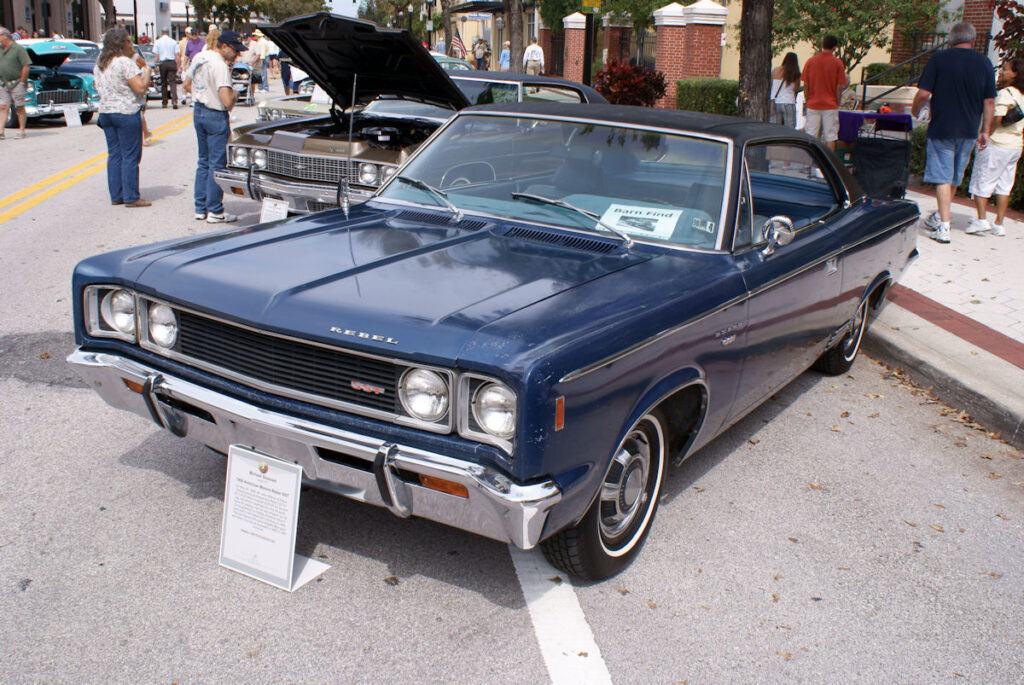
5. **AMC (American Motors Corporation, 1954-1988)**When the conversation turns to American car companies, the immediate thought often jumps to the omnipresent “Big Three.” Yet, for several decades, a formidable fourth independent manufacturer not only survived but thrived by championing innovation, efficiency, and, at times, remarkably prescient product planning. American Motors Corporation, forged from the ambitious 1954 merger of Nash and Hudson, masterfully carved out a sustainable niche through its distinctive, outside-the-box thinking, a philosophy that now, in retrospect, appears more relevant than ever in today’s rapidly shifting automotive landscape.
AMC’s most potent asset was its uncanny ability to anticipate significant market shifts, often well before its much larger competitors even registered them. Under the astute leadership of George Romney, who would later become Governor of Michigan, AMC astutely pivoted its focus toward compact, highly efficient “Rambler” models, an approach that was resoundingly validated by the 1958 recession. Decades ahead of its time, the company also pioneered the modern crossover concept with its 1980 Eagle, a vehicle that brilliantly fused four-wheel-drive capability with car-like unibody construction – a revolutionary formula that has, perhaps ironically, come to dominate the industry in the present day.
Indeed, the company’s most fertile period for innovation truly blossomed under Roy Chapin Jr. in the 1970s. This era saw the introduction of compelling niche products that challenged automotive norms, such as the Gremlin, notable as America’s first domestically-produced subcompact, and the Pacer, with its radical wide, short proportions and expansive glass area that offered unparalleled visibility. Crucially, this period also brought forth the legendary Jeep Cherokee XJ, a groundbreaking unibody SUV that is widely credited with kickstarting the modern utility vehicle movement, fundamentally redefining what an SUV could be.
Ultimately, AMC’s unfortunate demise wasn’t primarily a result of product failures but rather stemmed from an insurmountable lack of capital, which made it impossible to compete effectively with the sprawling model ranges of much larger manufacturers. Recognizing its core strength, the company judiciously concentrated its limited resources on developing the Jeep brand, a prescient decision given Jeep’s enduring success. This strategic focus eventually led to AMC’s acquisition by Chrysler in 1987, driven almost entirely by the irresistible value of the coveted Jeep brand, marking the end of an independent era.
A revived AMC would find itself uniquely positioned to thrive in today’s automotive world. The industry is currently navigating an unprecedented transition, with established manufacturers simultaneously maintaining traditional product lines while investing heavily in new propulsion systems. This creates fertile ground for nimble competitors focused on specific, well-defined niches rather than attempting to offer comprehensive, all-encompassing lineups. AMC’s historical prowess in developing innovative, space-efficient vehicles would translate seamlessly to modern urban mobility requirements, offering clever solutions for congested environments. The brand’s legacy of crafting distinctive, sometimes polarizing, designs would allow it to powerfully stand out in a market that is often criticized for its increasing homogeneity, where individuality is a prized commodity. A contemporary interpretation of the Pacer concept, for instance, could prioritize interior space and visibility through ingenious proportions, offering a compelling and genuinely fresh alternative to conventional crossovers.
Most significantly, AMC’s cherished tradition of technical resourcefulness – its ability to ‘do more with less’ – would prove invaluable in the pursuit of developing affordable electric vehicles. By keenly focusing on efficiency, elegant simplicity, and targeted innovation, rather than attempting to match the extensive feature lists of larger, more established manufacturers, a reborn AMC could deliver distinctive, accessible vehicles. These vehicles would expertly leverage the inherent advantages of electrification without burdening consumers with premium pricing, truly embodying a smart approach to future mobility. Such a strategy would allow AMC to once again serve as a beacon of thoughtful design and accessible technology.
Read more about: Beyond the Big Three: 15 Forgotten Car Brands from the ’60s and ’70s That Deserve Another Look
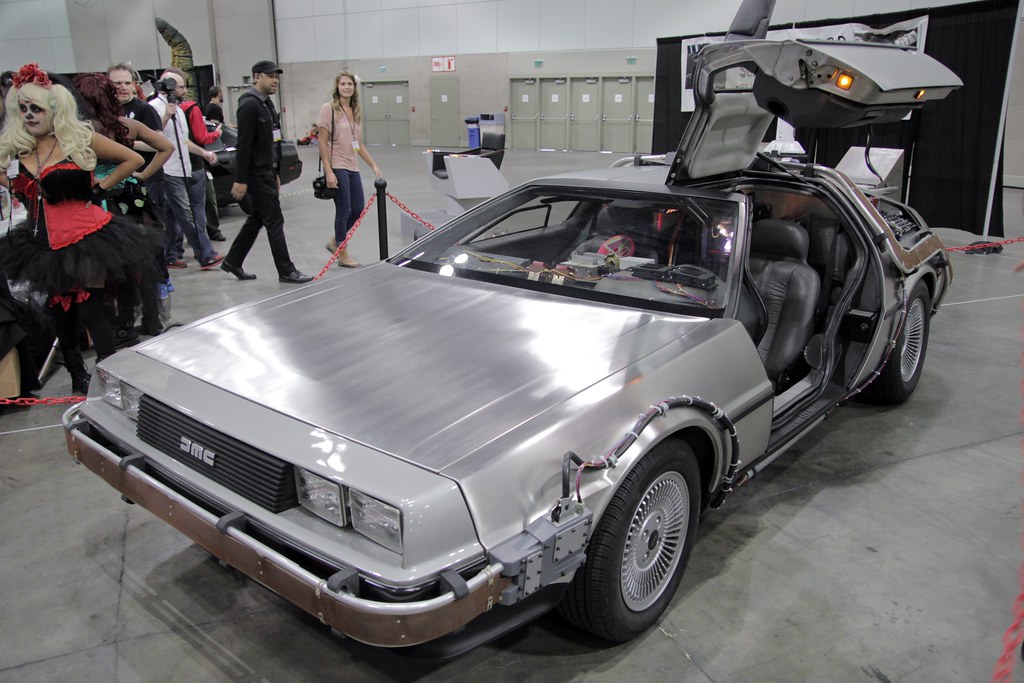
7. **DeLorean (1975-1982)**Few automotive startups have ever managed to capture the public’s imagination quite like the DeLorean Motor Company, and even fewer have sustained such profound cultural resonance decades after their commercial collapse. Founded by the charismatic former GM executive John Z. DeLorean, the company famously produced just a single model, the iconic DMC-12. Yet, through its distinctive design and, perhaps most notably, its starring role in the universally beloved “Back to the Future” film trilogy, it forged an enduring legacy that far transcends its brief, often tumultuous, commercial existence.
The DeLorean DMC-12 was, without a doubt, a bold statement in automotive innovation, both in its striking design and its underlying engineering. Its gleaming stainless steel body panels, left unpainted, famously eliminated the need for conventional paint finishes while simultaneously providing exceptional corrosion resistance. The car’s signature gullwing doors were not merely a stylistic flourish; they were engineered to improve access in surprisingly tight parking spaces while simultaneously creating an utterly unmistakable visual signature that instantly set it apart from anything else on the road. Famed Italian designer Giorgetto Giugiaro was responsible for its instantly recognizable wedge-shaped profile, while Lotus Engineering meticulously developed the chassis, a collaboration that skillfully blended American proportions with sophisticated European handling dynamics.
Despite these undeniable advantages and its striking aesthetics, the company grappled with a series of daunting challenges. Production delays were frequent, cost overruns mounted rapidly, and the car’s real-world performance regrettably failed to match its exotic, futuristic appearance. Financial pressures intensified dramatically as the 1980-1982 recession severely dampened sales in the luxury car market. The ultimate, tragic blow came with John DeLorean’s high-profile arrest, though he was later acquitted, in an FBI sting operation involving cocaine trafficking, a desperate, ill-fated attempt to secure funding for his struggling company. The ensuing scandal, combined with the mounting financial difficulties, irrevocably sealed the automaker’s fate after approximately 9,000 vehicles had been produced, bringing an abrupt end to an extraordinary vision.
However, the timing for a DeLorean resurrection appears particularly opportune, especially as the automotive industry is currently undergoing its most significant transformation since the internal combustion engine first replaced horse-drawn carriages. The monumental shift toward electrification is creating unprecedented opportunities for distinctive startups to establish themselves, often with fewer traditional barriers to entry than during the gasoline-dominated era, a phenomenon brilliantly demonstrated by the meteoric success of Tesla. A reborn DeLorean could masterfully leverage its potent nostalgic appeal while simultaneously embracing cutting-edge contemporary technology, bridging the past and the future with an unmistakable flair.
The brand’s inherent, existing recognition would provide invaluable marketing advantages, an asset simply unavailable to the vast majority of new automotive startups. An electric DeLorean would naturally reference the original’s iconic futuristic design language, seamlessly incorporating modern aerodynamic principles and advanced lighting technology. Most compellingly, an electric powertrain would finally deliver the exhilarating performance that the original car’s groundbreaking appearance promised, a promise that its relatively underpowered PRV V6 engine regrettably could not fully deliver. The instant, breathtaking torque of electric motors would fundamentally transform the driving experience, making a modern DeLorean as incredibly quick as it looks. Furthermore, the simplified packaging inherent to electric powertrains could effectively address some of the original car’s challenging weight distribution issues, leading to a more balanced and dynamic vehicle. Recent developments even hint that this long-awaited revival may indeed materialize; a reimagined DeLorean Alpha5 electric vehicle has been publicly announced, promising the signature gullwing doors and sleek styling that beautifully pays homage to the original, all while thoroughly modernizing the entire concept. Regardless of whether this particular venture ultimately succeeds, the DeLorean name remains a powerful and unforgettable automotive icon, unequivocally worthy of resurrection and a prominent place in the future of motoring.
Car Model Information: 1981 Delorean DMC-12
Name: DMC DeLorean
Alt: 1983 DeLorean
Caption: 1983 DeLorean
Manufacturer: DeLorean Motor Company
Production: January 21, 1981 – December 1982
ModelYears: 1981–1983
Assembly: Dunmurry
Designer: Giorgetto Giugiaro
Class: Sports car
BodyStyle: coupé
Layout: Rear-engine, rear-wheel-drive layout
Doors: Gull-wing doors
Engine: 2.85 L
Abbr: on
Powerout: 130 hp
Transmission: 5-speed manual ,3-speed automatic
Wheelbase: 2413 mm
Length: 4267 mm
Width: 1988 mm
Height: 1140 mm
Weight: 1233 kg
Sp: us
Categories: 1980s cars, All Wikipedia articles written in American English, Articles with short description, Automobiles with backbone chassis, Automobiles with gull-wing doors
Summary: The DMC DeLorean is a rear-engine, two-seat sports car manufactured and marketed by John DeLorean’s DeLorean Motor Company (DMC) for the American market from 1981 until 1983—ultimately the only car brought to market by the fledgling company. The DeLorean is sometimes referred to by its internal DMC pre-production designation, DMC-12, although this was not used in sales or marketing materials for the production model.
Designed by Giorgetto Giugiaro, the DeLorean is noted for its gull-wing doors and brushed stainless-steel outer body panels, as well as its lack of power and performance. Though its production was short-lived, the DeLorean became widely known after it was featured as the time machine in the Back to the Future films.
With the first production car completed on January 21, 1981, the design incorporated numerous minor revisions to the hood, wheels and interior before production ended in late December 1982, shortly after DMC filed for bankruptcy and after total production reached an estimated 9,000 units.
Despite the car having a reputation for poor build quality and an unsatisfactory driving experience, the DeLorean continues to have a strong following, driven in part by the popularity of Back to the Future. 6,500 DeLoreans were estimated to still be on the road as of 2015.
Get more information about: DMC DeLorean
Buying a high-performing used car >>>
Brand: DeLorean Model: DMC-12
Price: $37,500 Mileage: 0 mi.
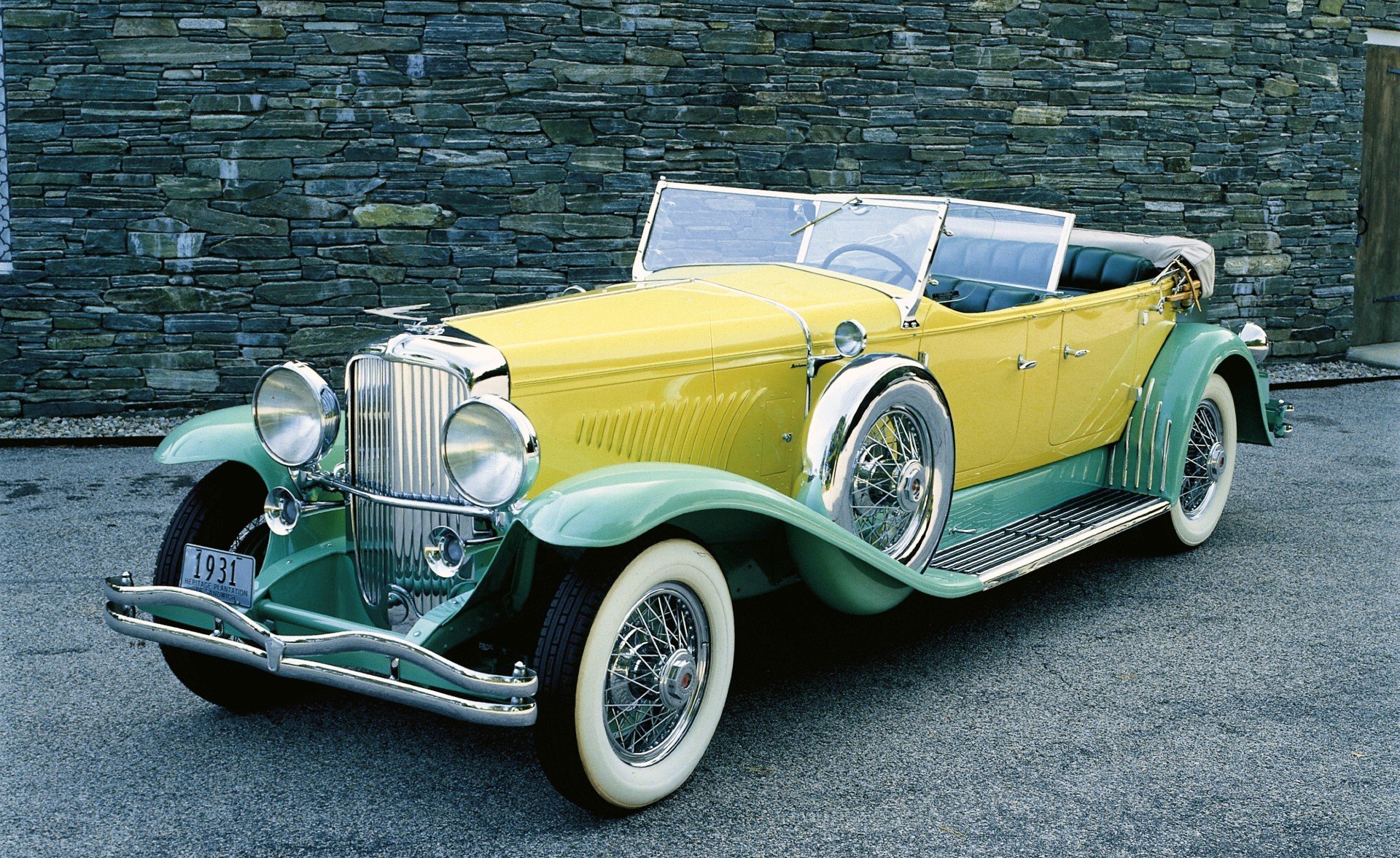
8. **Duesenberg (1913-1937)**When someone says, “It’s a Duesey,” they are using an American idiom that implies something extraordinary or magnificent, a phrase that originated directly from Duesenberg’s unparalleled reputation for crafting the most magnificent automobiles of the pre-war era. During its tragically brief yet undeniably brilliant existence, this Indiana-based manufacturer produced vehicles of such profound engineering excellence and opulent luxury that they continue to stand among the most desirable and coveted collector cars ever created. This makes Duesenberg, without question, the most prestigious American automotive brand currently awaiting a potential resurrection, a marque synonymous with ultimate automotive grandeur.
Brothers Frederick and August Duesenberg initially established their formidable reputation through groundbreaking racing success, achieving victories at the prestigious Indianapolis 500 in 1924, 1925, and again in 1927. This invaluable competition experience directly informed the advanced engineering of their production vehicles, which featured innovative technologies such as overhead camshafts, four-valve heads, and powerful hydraulic brakes – features that were incredibly sophisticated for an era when most other manufacturers were still employing far simpler and less advanced technologies. The brand truly reached its zenith after being acquired by E.L. Cord’s expanding automotive empire in 1926, a pivotal moment that led to the creation of the legendary Model J, a car that would define an era of luxury and performance.
Introduced mere months before the devastating 1929 stock market crash, the Model J was an engineering marvel, boasting a massive 420-cubic-inch straight-eight engine that produced an astonishing 265 horsepower. This output was more than double that of even Cadillac’s V16 flagship, setting an unprecedented standard for power. The supercharged SJ variant further boosted output to an incredible 320 horsepower, firmly cementing its status as America’s most powerful production car by a substantial margin, a true testament to Duesenberg’s engineering prowess. Duesenberg’s distinctive approach to luxury placed a paramount emphasis on raw performance and engineering excellence, valuing substance over mere superficial opulence. Each Duesenberg chassis was an automotive canvas, receiving custom coachwork from the world’s most esteemed bodybuilders, thereby creating unique, bespoke masterpieces for an exclusive clientele that included luminaries such as Gary Cooper, Clark Gable, and various European royalty.
Tragically, the profound economic devastation of the Great Depression ultimately rendered such unbridled extravagance unsustainable, and production officially ceased in 1937 after approximately 480 Model Js had been meticulously built. Despite its premature end, the legacy of Duesenberg endured, its name becoming synonymous with an unmatched pinnacle of automotive achievement, a symbol of American ingenuity and luxury that few, if any, have ever surpassed. The phrase “It’s a Duesey” remains a powerful cultural artifact, a constant reminder of the brand’s monumental impact and unparalleled contribution to automotive history.
The 21st century now presents an ideal set of conditions for Duesenberg’s revival, as the ultra-luxury market has experienced dramatic expansion and diversification. A resurrected Duesenberg could confidently occupy rarified territory, positioned even above established giants like Rolls-Royce and Bentley. It could offer truly bespoke vehicles imbued with a distinctly American character, setting them apart from European traditions while maintaining global appeal. The brand’s historical emphasis on engineering excellence would translate naturally and powerfully to modern electric powertrains, where horsepower figures that far exceed the original Model J’s formidable output are not only attainable but relatively straightforward to achieve with contemporary technology. A new Duesenberg could seamlessly combine cutting-edge battery technology with meticulously hand-crafted interiors and the kind of limited-production exclusivity that appeals to the most discerning collectors.
Most significantly, a reborn Duesenberg would have the profound opportunity to revive the proud tradition of American automotive excellence at the very highest echelons of luxury. While European marques currently dominate the ultra-luxury segment, Duesenberg’s rich heritage offers authentic and unparalleled credentials for creating American vehicles without compromise. These would be automobiles designed not merely to transport their occupants from one point to another, but to utterly awe and inspire, just as the magnificent originals did nearly a century ago. Such a revival would be a powerful statement, demonstrating that American luxury can indeed stand shoulder-to-shoulder with, and even surpass, the world’s finest, cementing a new chapter for an old legend.

9. **Tucker (1947-1949)**Few automotive narratives manage to combine groundbreaking innovation, intense controversy, and lingering ‘what might have been’ speculation quite like the remarkable story of Preston Tucker and his revolutionary sedan. Despite producing a mere 51 vehicles before the company’s dramatic and tragic collapse, Tucker managed to create an enduring legacy of forward-thinking design and a courageous spirit dedicated to challenging established industry conventions. These inherent qualities would make its resurrection particularly meaningful and resonant in today’s rapidly evolving automotive world, a landscape ripe for disruption and new paradigms.
The 1948 Tucker Sedan, famously nicknamed the “Tucker Torpedo” during its development phase, represented an audacious, clean-sheet approach to post-World War II automobile design. Preston Tucker was a visionary who fearlessly incorporated safety features that were astonishingly decades ahead of their time. These included a comprehensively padded dashboard designed to mitigate impact injuries, a shatterproof pop-out windshield intended to protect occupants in a collision, and, most iconically, the central “Cyclops Eye” third headlight. This innovative light was engineered to turn with the steering wheel, ingeniously illuminating corners and greatly enhancing night visibility, a feature that was truly revolutionary for its era.
Beyond its safety innovations, the vehicle’s technical advancements were equally impressive and forward-thinking. Its unique rear-mounted, horizontally opposed six-cylinder engine was cleverly derived from an aircraft design, offering a lower center of gravity and more efficient packaging. The planned direct-torque-converter transmission, although not fully implemented in all production models, was designed to eliminate the conventional clutch and gearshift, promising a smoother, more user-friendly driving experience. Furthermore, the Tucker featured four-wheel independent suspension and four-wheel disc brakes, offering levels of handling prowess and stopping power that were far superior to virtually all of its contemporary competitors, solidifying its status as an engineering marvel.
However, the company’s eventual downfall was a complex tapestry woven from a combination of daunting manufacturing challenges, persistent cash flow problems, and, most damagingly, highly controversial SEC investigations into its stock offering practices. While Preston Tucker was ultimately acquitted of all charges leveled against him, the crushing weight of negative publicity and the exorbitant legal costs proved to be utterly fatal to the fledgling manufacturer. The brand’s poignant story and its struggle against perceived entrenched interests were later powerfully dramatized in the acclaimed 1988 film “Tucker: The Man and His Dream,” which cemented the brand’s reputation as an innovative, yet tragically thwarted, underdog battling against the powerful automotive establishment.
A modern Tucker revival would serve as a powerful homage to Preston Tucker’s original mission: to relentlessly challenge automotive conventions and to prioritize safety innovation above all else. The industry’s current, profound transition toward electric propulsion, advanced autonomous capabilities, and entirely new ownership models creates the perfect conditions for a brand dedicated to fundamentally rethinking core aspects of automotive design. A resurrected Tucker could specialize in developing novel and revolutionary safety technologies, pushing far beyond those merely required by regulations, thereby continuing Preston Tucker’s legacy of fiercely protecting occupants through truly innovative and audacious approaches.
The brand’s historical association with unconventional engineering would provide authentic and invaluable credentials for introducing radically new vehicle architectures, specifically optimized for the unique demands and advantages of electric powertrains. Most compellingly, a new Tucker enterprise could powerfully embody the pure entrepreneurial spirit of challenging established industry players with fresh, disruptive thinking, much in the same vein as Tesla has so successfully done in recent years. By intensely focusing on specific, transformative innovations rather than attempting to compete across full model lineups, a reborn Tucker could significantly influence future industry directions through targeted disruption, proving once again that sometimes the most significant and lasting automotive contributions come from those visionary individuals willing to boldly challenge conventional wisdom and forge entirely new paths.
The journey through these forgotten marques—AMC, DeLorean, Duesenberg, and Tucker—reveals not just tales of past glory and unfortunate demises, but a powerful narrative of resilience, innovation, and untapped potential. Each brand, in its own unique way, pushed the boundaries of what was possible, offering distinctive visions that continue to resonate with enthusiasts and market demands today. As the automotive world stands on the precipice of its next great transformation, the echoes of these pioneers remind us that the future is not solely about entirely new creations, but also about rediscovering and reimagining the brilliance of the past. The stage is set for a new era where heritage, infused with cutting-edge technology, can once again redefine luxury, performance, and the very essence of driving excitement. These brands are more than just memories; they are blueprints for a future where character, innovation, and an independent spirit drive progress, proving that sometimes, the most exciting comeback stories are those we’ve almost forgotten.

